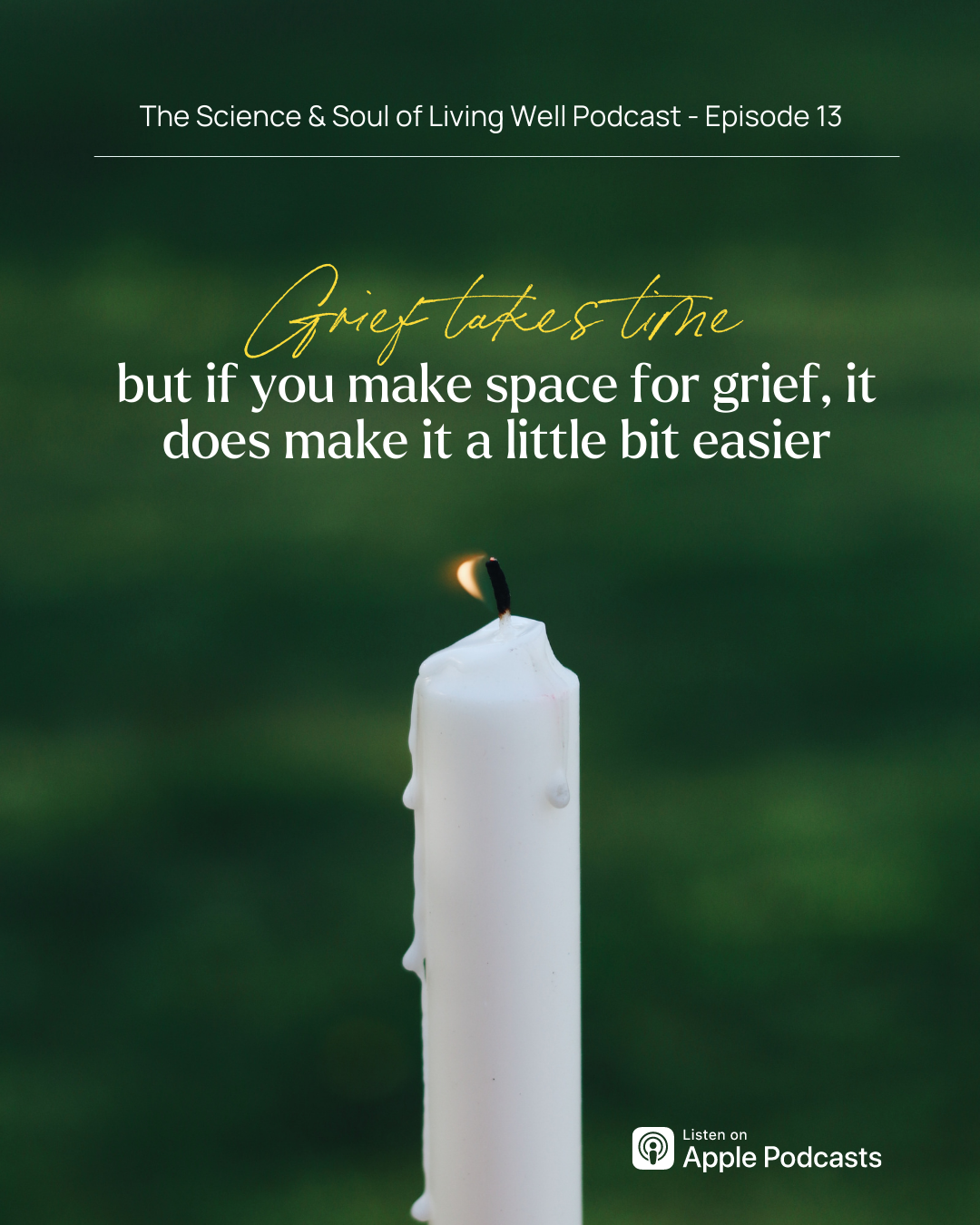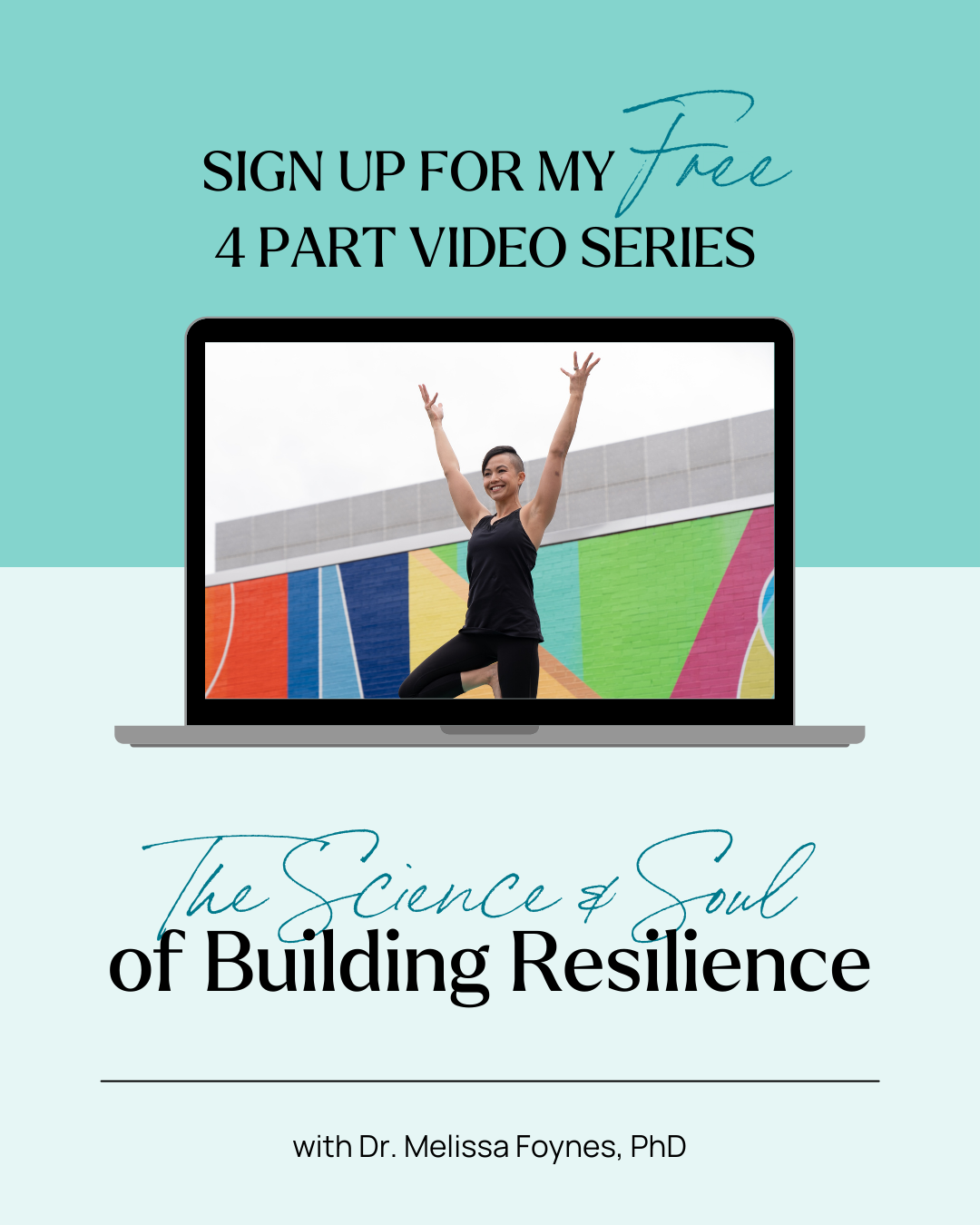welcome, I'm Melissa
Links
As a holistic coach, psychologist, mindfulness, meditation & yoga instructor, & Ayurvedic doula I offer personalized paths to growth & healing.
you may also like...
Containers for Grief: Ritual, Writing, Nature, Art and Meaningful Connection
April 1, 2021
I had the deep honor of speaking with Rona Fernandez, a first-generation Filipino-American, about her grief journey and the death of her beloved daughter, Naima. She highlighted ways that various “containers,” such as rituals, writing, nature, art and meaningful connection, can support the grieving process. Rona also offered some specific examples of ways in which we can explore and cultivate our own containers, especially when existing structures are not in place or do not resonate with us.
Reading from an excerpt from her powerful writing, “The Ritual,” Rona shares how holding space for grief is important for both individual and collective healing. We also explored ways we can fully support one another when grieving.
Rona is an incredible light in the world whose work, writing, compassionate advocacy and unbounded love for her daughter, Naima, continues to promote healing not just for bereaved parents — but for all of us.
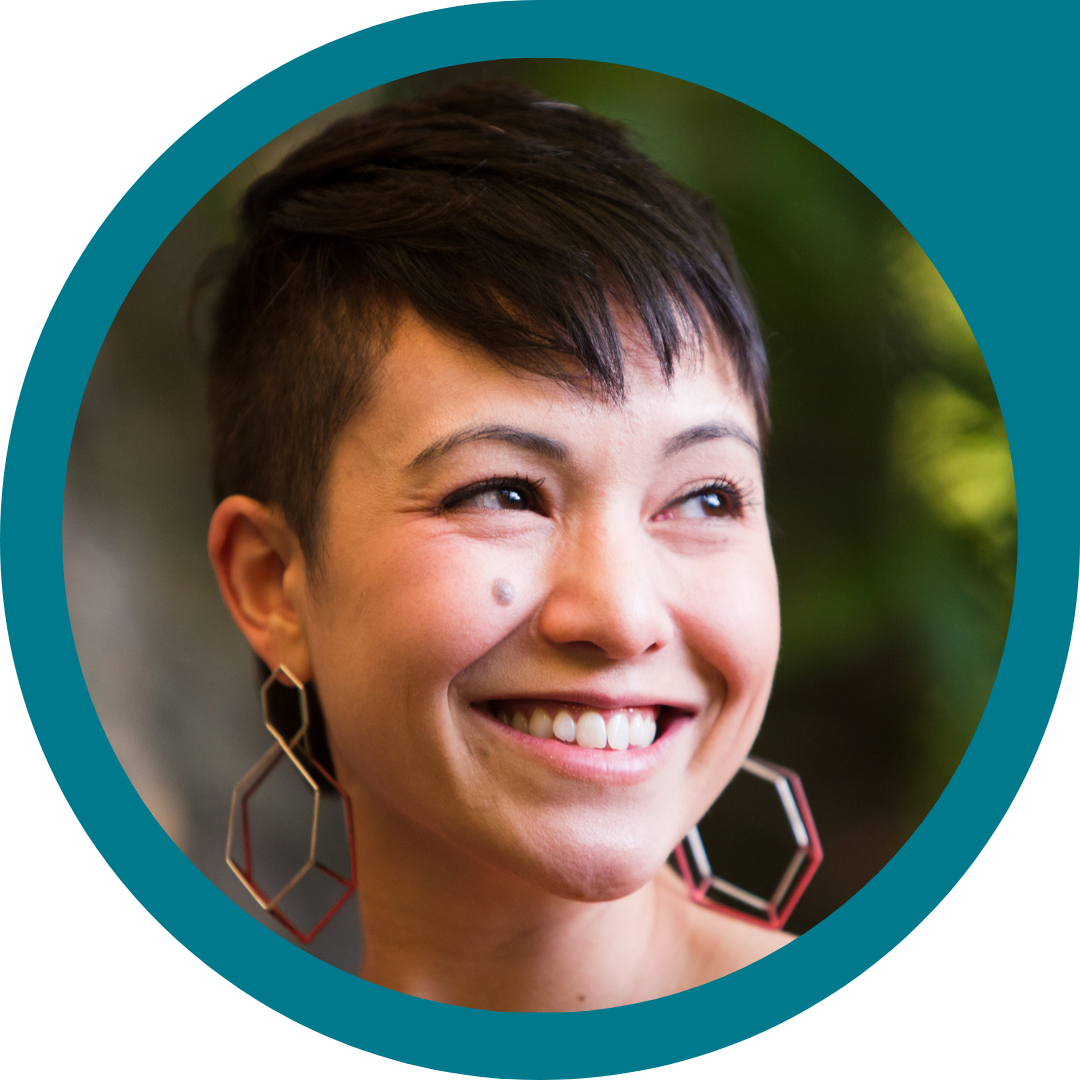 Melissa: I just want to thank you for your courage and your willingness to be a writer and to share aspects of your personal life with us. It has profoundly touched me and has been meaningful for many of the people with whom I’ve worked.
Melissa: I just want to thank you for your courage and your willingness to be a writer and to share aspects of your personal life with us. It has profoundly touched me and has been meaningful for many of the people with whom I’ve worked.
I want to make sure that we give time and space to acknowledge and give voice to the aspects of your journey that feel important to you. And so, I’d love to start with what feels important to you in terms of a place to begin.
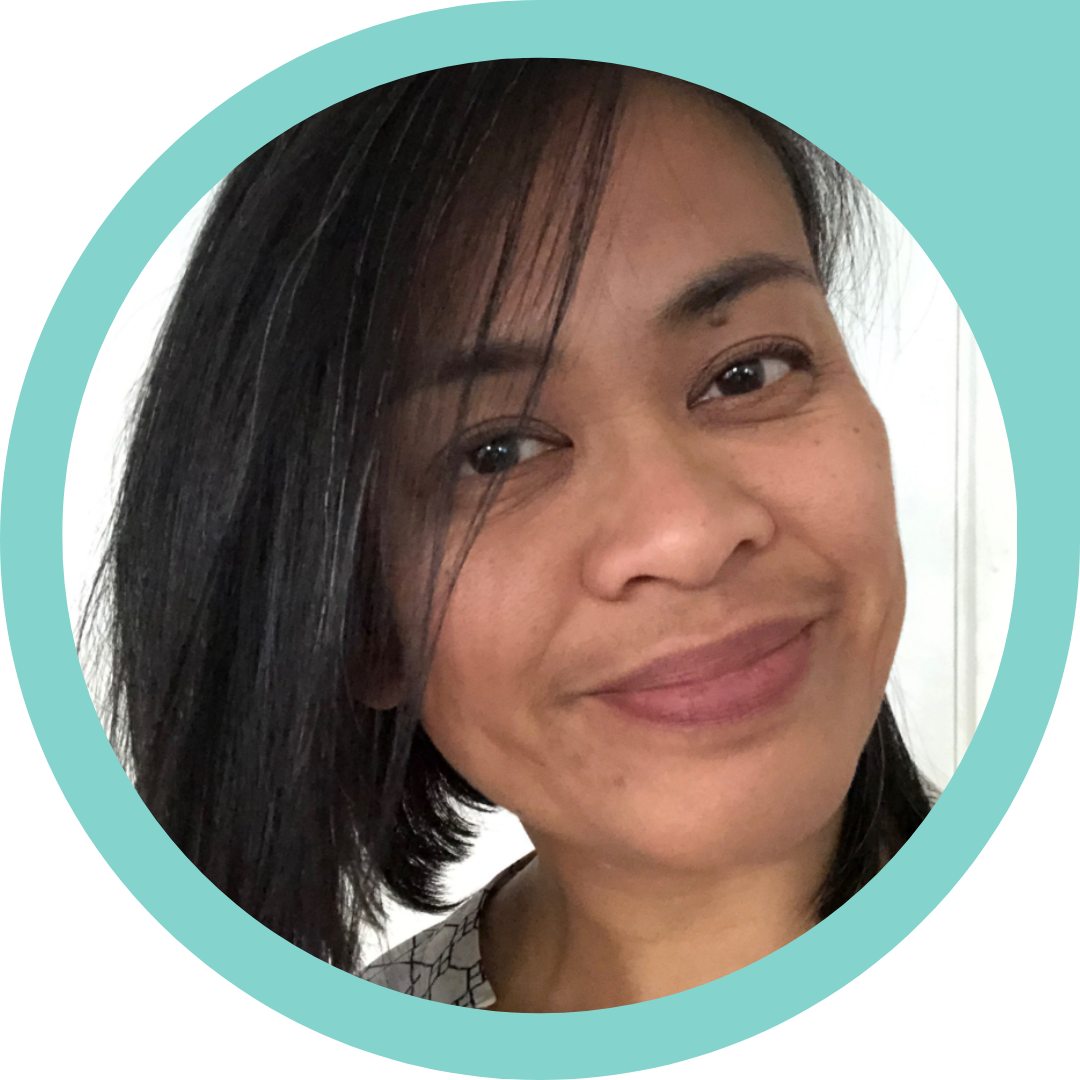 Rona: I would like to talk about my daughter a little bit since it’s her 10th birthday coming up, which is a big milestone, and I don’t get to talk about her very much outside of talking with my husband. I just want to say that she felt like a very special baby. She was a very intense and observant baby. And I wonder a lot about what she would be like now — whether she would take after my husband or myself and what she’d be interested in.
Rona: I would like to talk about my daughter a little bit since it’s her 10th birthday coming up, which is a big milestone, and I don’t get to talk about her very much outside of talking with my husband. I just want to say that she felt like a very special baby. She was a very intense and observant baby. And I wonder a lot about what she would be like now — whether she would take after my husband or myself and what she’d be interested in.
I want to offer this partially because I like talking about her, but also because if you know somebody who’s had a loss, especially a baby or a child, a lot of times they might just want to talk.
Grieving rituals in a denying culture
 Melissa: I really love hearing about her, and I’m curious to hear a bit more about what your experience has been in a culture that many people describe as grief-denying. Is there anything that you want to speak to about your experience and what grieving has been like in this culture?
Melissa: I really love hearing about her, and I’m curious to hear a bit more about what your experience has been in a culture that many people describe as grief-denying. Is there anything that you want to speak to about your experience and what grieving has been like in this culture?
 Rona: I’m first generation Filipino-American, which means my parents were born in the Philippines. And I feel like Filipino culture — even Filipino-American culture to a lesser degree — is a little more comfortable with the idea of death. There are a lot of rituals around death and grieving in Filipino-American culture that are largely rooted in Catholic religion and practice. I know that doesn’t work for everyone, but it’s a structure that I think has been helpful for me.
Rona: I’m first generation Filipino-American, which means my parents were born in the Philippines. And I feel like Filipino culture — even Filipino-American culture to a lesser degree — is a little more comfortable with the idea of death. There are a lot of rituals around death and grieving in Filipino-American culture that are largely rooted in Catholic religion and practice. I know that doesn’t work for everyone, but it’s a structure that I think has been helpful for me.
Because there were containers to grieve, it made a huge difference. For example, even before my daughter passed away, I had lost a really beloved elder of mine. She was kind of like an adopted grandmother. I think that I was in my early 20s at the time, and I had never had anybody that close to me die before.
Also, I had never been through the rituals around death in Filipino culture. So we had the nine days of praying the rosary. Every night, after she passed away, everyone gathered at the house and prayed the rosary together; it was like clockwork. All the people that she knew — both family and friends — got together, prayed and then ate. So it was kind of like nine days of a wake.
Next we had the funeral mass, and then we had the burial. After 40 days, there was another ritual where people got together, prayed and gathered. And even though that loss was definitely not as devastating for me as the loss of my daughter, it taught me that, if you make space for grief, it does make it a little bit easier. It gives you permission to grieve and the time to grieve. Because every day for nine days, I could go somewhere where I knew I could talk about her. I knew I could cry if I wanted to; I knew I could just be around other people who were also grieving.
And that I think is something that we have more of now in North American culture because of social media. More people have platforms to speak out. But it’s still pretty new — whereas these rituals from other cultures are generations or centuries old. We can really, I think, rely on them as containers for our grief.
I feel like, in this country, we only focus on the celebrations of life. When a child dies, how do you do that? I think it’s almost impossible to do that because there’s nothing happy about it. I think for me, coming from this sort of dual-cultural background, that I was really grateful to have the examples of those grieving structures.
When my daughter died, those structures gave me something to do. But I think, because the loss and grief was so profound, it also eventually felt like it wasn’t enough for me. And so I had to come up with my own things to do. Sometimes the structures that exist for us aren’t enough. And then what do we do?
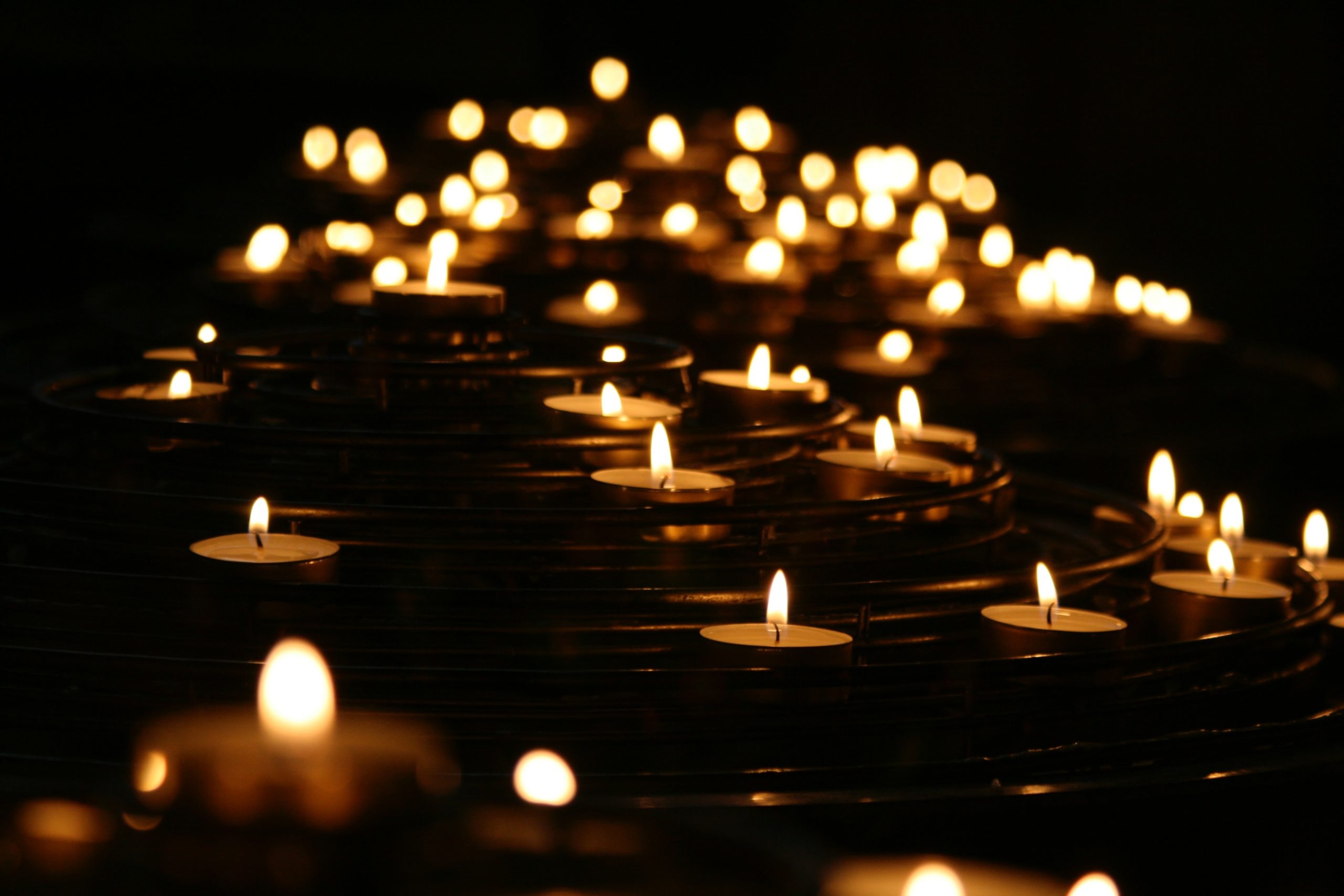
How to cultivate meaningful personal grief rituals to begin to heal
 Melissa: I really appreciate you sharing all that you did. For many people, there isn’t that structure in place. And even for those who do have a structure, every loss in our lives is unique and can bring up different challenges and complexities. Oftentimes, there is a need to figure out what feels resonant for a specific loss even if there are certain structures that exist.
Melissa: I really appreciate you sharing all that you did. For many people, there isn’t that structure in place. And even for those who do have a structure, every loss in our lives is unique and can bring up different challenges and complexities. Oftentimes, there is a need to figure out what feels resonant for a specific loss even if there are certain structures that exist.
I’m wondering if you could share a bit more about what your process was like for cultivating rituals that felt meaningful to you in connecting with your grief and honoring Naima.
 Rona: Yeah — that was a whole other process to figure that out. And I think it changes over time. In the beginning, I leaned on what I knew, which is all those practices that I just mentioned. We didn’t have a mass because my daughter hadn’t been baptized yet. But we did have a memorial service and a spiritual ceremony around her passing.
Rona: Yeah — that was a whole other process to figure that out. And I think it changes over time. In the beginning, I leaned on what I knew, which is all those practices that I just mentioned. We didn’t have a mass because my daughter hadn’t been baptized yet. But we did have a memorial service and a spiritual ceremony around her passing.
I know a lot of people have issues with organized religion, and I totally understand and respect that. But for me, I think the container was important. After the first six months or so after my daughter died, there were a lot of things I was still trying to do. I would go to grief retreats, workshops and support groups. Some of this was not so much ritual as it was just getting support — getting support to talk about your grief and to meet other people who’ve gone through a similar loss.
I did all the familiar things first, and those helped sort of. But at the end, you’re still left with your grief. It took me months to be able to get out of bed in the morning after laying there for hours not wanting to do anything.
The best advice I got about grieving was actually from my daughter’s pediatrician, who we went to go see after Naima passed away. She said, “I want you to take care of your body. I want you to get rest and sleep and eat well because grieving is really hard work.”
There’s no recipe. There’s no pill. There are no five steps to getting over your grief. You actually have to grieve. And that’s the hardest part. I think, for a lot of people and especially in this culture that is grief-denying, it’s like I just want to get it over with. That’s not how it works. It has its own timeline; it’s completely unpredictable.
So it took a long time and was sort of trial and error. I spent a lot of time in nature. Nature was always the place where I could go where I felt the most held. There’s no judgment in nature; nature is just there and gives you her beauty and space to receive her energy.
And I turned to — I don’t even know how I came across this — but I turned to scrapbooking, which I’d never done before. I had all these pictures of her, and I wanted to do something with them. I wanted to have a way to sit and think about her and look at her pictures, which I was doing all the time anyway, and then create something with them.
So I started making scrapbooks for her babysitter, which is where she actually passed away. She passed away during a daytime nap at her daycare. I made one for her babysitter, and I made one for her godparents. I made them for the different people who loved her. It was very healing. It’s not a religious or spiritual practice, but it did become one for me. Now I have pictures and stories about her in different people’s homes all over the place. And that makes me feel better — that she won’t be forgotten.
 Melissa: I really appreciate you highlighting how there can be so much trial and error involved, like leaning into what is feeling helpful. A lot of what you shared is really, really powerful and important in terms of figuring out ways to honor our own feelings — as well as the people that we’ve lost — and how that process can take time.
Melissa: I really appreciate you highlighting how there can be so much trial and error involved, like leaning into what is feeling helpful. A lot of what you shared is really, really powerful and important in terms of figuring out ways to honor our own feelings — as well as the people that we’ve lost — and how that process can take time.
 Rona: I think they’re connected — at least for me. There are so many rituals around honoring ancestors, honoring people who have passed away. It’s really just about talking about them or putting their pictures up. These aren’t complicated things. If you think about Mexican culture and the Day of the Dead, the Filipinos have a similar cultural practice. You sit around and talk about people who have passed. The simple act of remembering and giving voice to your feelings and sharing memories about the person is really huge and powerful.
Rona: I think they’re connected — at least for me. There are so many rituals around honoring ancestors, honoring people who have passed away. It’s really just about talking about them or putting their pictures up. These aren’t complicated things. If you think about Mexican culture and the Day of the Dead, the Filipinos have a similar cultural practice. You sit around and talk about people who have passed. The simple act of remembering and giving voice to your feelings and sharing memories about the person is really huge and powerful.
One of the ways I did that was using social media. I posted a lot about my daughter on my personal Facebook page, and I created a Facebook group for people who wanted to remember her. There are still over 400 people in the group even years after she passed away.
I have friends who are artists who are going to create art, imagining what she’d look like at 10-years-old. Because we had this Facebook group, it created a container for people to think about and acknowledge that her 10th birthday was happening — and that we still think about her.
I’m fortunate to have very loving, supportive friends who come up with these ways to remember my daughter. But without that space — even just a Facebook group — I don’t know if it would have happened. We have all those tools now with social media, which is great. And it’s really helped push our culture to acknowledge painful losses instead of acting like they don’t exist.
 Melissa: The memories, the feelings, the physical reactions that don’t have words — all of those different manifestations of grief — it seems the permission to grieve begets more permission. Without the Facebook group, perhaps there wouldn’t be these continuous reminders for other people that have led to different ways of honoring your daughter. I think this is a powerful component of community for many people to process their grief.
Melissa: The memories, the feelings, the physical reactions that don’t have words — all of those different manifestations of grief — it seems the permission to grieve begets more permission. Without the Facebook group, perhaps there wouldn’t be these continuous reminders for other people that have led to different ways of honoring your daughter. I think this is a powerful component of community for many people to process their grief.
I’m wondering if you might be willing to read an excerpt from your writing,“The Ritual,” because it so powerfully speaks to a lot of the themes we’ve been talking about today.
 Rona: I’d be glad to. This is from the beginning of the piece.
Rona: I’d be glad to. This is from the beginning of the piece.
An excerpt from The Ritual by Rona Fernandez
Once a week, I buy her flowers. Her colors are purple and pink, so I pick blush-colored baby roses, neon Gerber daisies, white lilies with fuchsia centers, violet-blue irises. And foliage to round out the arrangement: glossy camellia leaves, gray-toned eucalyptus, feathery green ferns. I have my favorite spots to buy the flowers — the grocery store in our neighborhood, the farmers’ market when it’s the right season. I avoid the cheap flowers at the supermarket that I know will die within a day or two; those aren’t good enough for this. A few times a year, a thoughtful friend will drop off flowers from her garden, usually on the more difficult days. But I don’t expect anyone else to take this task on. This is my job as her mother though I wish it wasn’t.
This is how I mother my child.
My daughter’s name is Naima Kali — like the Coltrane song and the Hindu goddess of creation. She was born on March 25, 2011, her due date. The nurses said this was a rare thing. But I didn’t schedule her birth — it was too sacred an event to coordinate around my common needs. Still, my daughter came right on time, and I birthed her the old-fashioned way, took no drugs to shield me from the intensity and immensity of labor. I wanted to be fully present during the birth of my first child, wanted to feel it all — pain, ecstasy, fatigue, joy, overwhelm, all.
The contractions started in earnest the night before she was born, a drizzly Bay Area spring evening, cool and quiet. They were waves of energy that started in my full womb, rocking me from inside out, drawing guttural moans from a deep, primal place inside me. People stared at me, wide-eyed, as I walked past them in the hospital lobby, leaning heavily on my husband Henry’s arm as we made our way to the maternity ward. I felt powerful and vulnerable at the same time, sensing that my body was fully in control, that my mind would need to surrender and let my body do this job that it had been created for.
Through the night, the contractions fatigued me as they stretched and opened my womb, my eyelids becoming so heavy that the biggest worry became whether I could stay awake until the end. I kept trying to nap, thinking the real labor was still coming, not knowing that I was in the midst of it, that this was it.
Then finally, after twelve hours of active labor and more than three hours of pushing, she arrived.
I heard my Naima before I ever saw her, for she screamed aloud as she emerged from my body, announcing herself, lungs filling with air, already demanding attention. Henry and our midwife caught her as she was born. As they placed her on my chest, I chanted, shouting, “My baby! My baby!”
Relief and gratitude and love commingled in a deep wave of emotion as my body released her. She was pink, perfect. Her rounded, moist head lifted slightly as she was placed on top of me, her eyes — double-lidded, caramel brown, and beautiful, just like my husband’s — were already open, and she stared straight at me. Naima had an intensity even at birth that will always stay with me.
Bonding is a shallow way to describe what happened between my daughter and me at that moment. Our eyes met for that first time and — bam — that was it. She was mine; I was hers. We were connected immutably from that moment on. I knew then that I would do anything to keep her safe, happy.
Soon, Naima was latched onto my breast; her dark-pink mouth strong and voracious. Henry and I gazed down at her in awe, both feeling something that the word love only scratches the surface of. There is a photo of the three of us at this moment — my dark hair damp with sweat, Henry’s dark eyes shining with pride, tiny Naima bundled in a white, pink and blue blanket in my arms. Our little, perfect, new family.
I often arrange the flowers during a moment of quiet when I’m home alone. It’s a silent prayer that I shape with my hands as I carefully place each blossom and stem in a water-filled vase.
This is how I mother my daughter now, but I wish that I could mother her in other, more normal ways. Wish that I could teach her how to tie her shoes or put her clothes on right side out; wish that I could make tiny pencil marks on the wall in her bedroom to show how much she’s grown each year. Wish that I could cook her favorite food for her — maybe it would have been pizza or lumpia or noodles — or watch my husband teach her how to ride a bike. Wish that I could hear her cry Mommy after falling off the jungle gym at the park or comfort her when she has a fever.
These are the precious moments that most parents take for granted: the small, everyday witnessings of life as their child grows and changes. I wish I could have all these things.
But I can’t. Because my daughter, my first and only born, my Naima, is not here. She is dead.
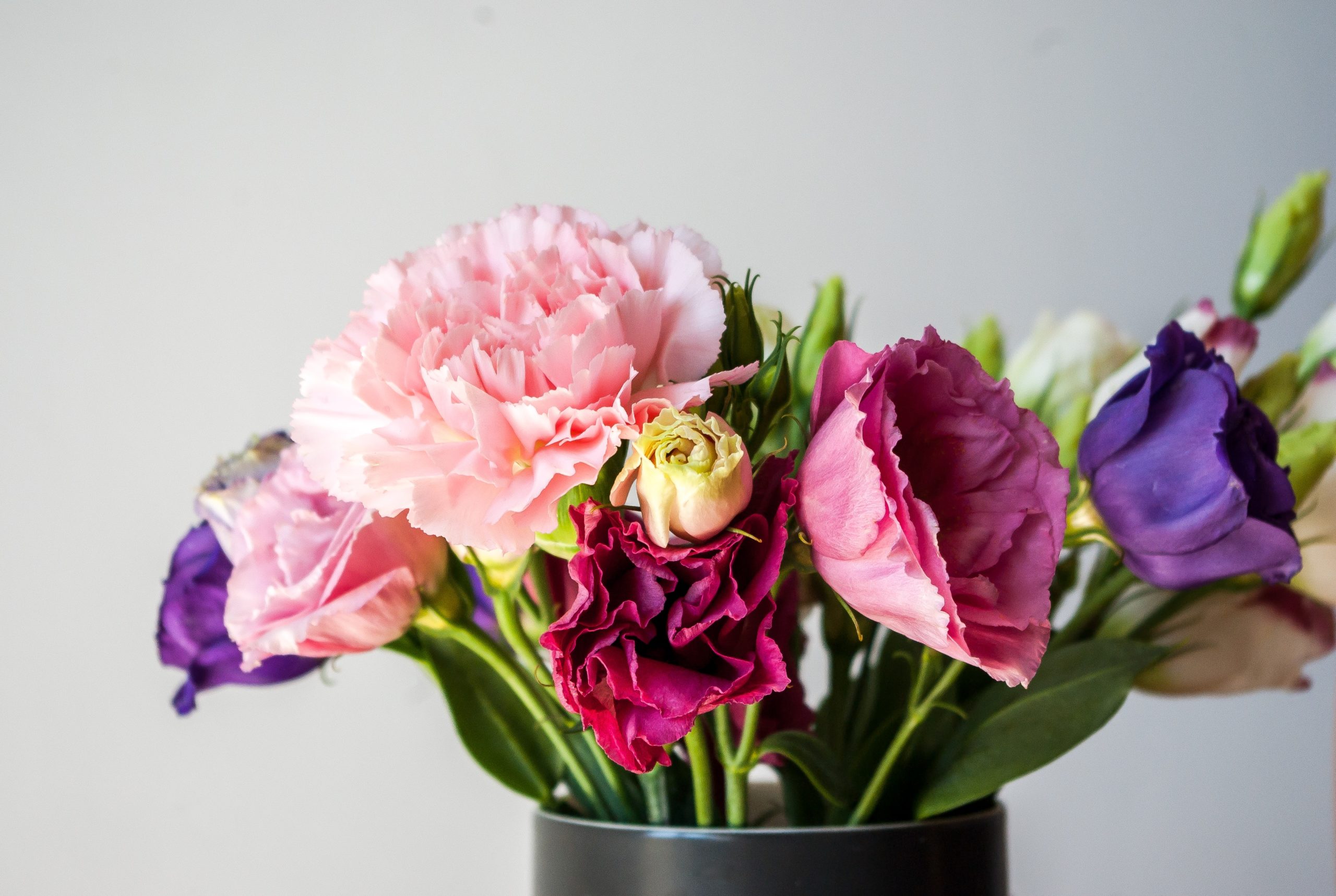
Start the grieving process where you are
 Melissa: Thank you Rona for reading that.
Melissa: Thank you Rona for reading that.
I wonder if you have any words of wisdom or anything you want to share about your experience that might be helpful for people who are considering writing as a way to process and be with their grief.
 Rona: I was not able to write for more than 10 minutes the first two years after my daughter passed away. It was just too hard. I would start crying, and I would become exhausted. If you’re doing it to heal, it should bring up stuff; it will bring up stuff. So I would say don’t push yourself too hard — like give yourself half an hour but maybe you only write for five minutes. There are no rules about how much you have to write. I didn’t write this piece, “The Ritual,” until five years after my daughter passed away.
Rona: I was not able to write for more than 10 minutes the first two years after my daughter passed away. It was just too hard. I would start crying, and I would become exhausted. If you’re doing it to heal, it should bring up stuff; it will bring up stuff. So I would say don’t push yourself too hard — like give yourself half an hour but maybe you only write for five minutes. There are no rules about how much you have to write. I didn’t write this piece, “The Ritual,” until five years after my daughter passed away.
There’s no right or wrong way to do it, and you can write one line. That’s fine. Or you can read if writing is too hard. Maybe reading other people’s work is a little easier, and it might inspire you to put pen to paper — or fingers to keyboard. But I think the main thing is just to give yourself the space to process your grief.
 Melissa: I appreciate you sharing all of those examples because sometimes it can be very powerful to have concrete ideas about things people can try on. Hearing other people’s stories and things they have found helpful — even if it doesn’t resonate or doesn’t work — can still help.
Melissa: I appreciate you sharing all of those examples because sometimes it can be very powerful to have concrete ideas about things people can try on. Hearing other people’s stories and things they have found helpful — even if it doesn’t resonate or doesn’t work — can still help.
 Rona: Grief — and unresolved grief — can be very powerful. It can also be very problematic if we don’t take care of them. I really hope that, when you’re grieving, there is time and space to take care of your grief — and take care of yourself as you’re grieving because you deserve it. But also, the world needs it. It’s actually really important for all of our healing and all of our well-being.
Rona: Grief — and unresolved grief — can be very powerful. It can also be very problematic if we don’t take care of them. I really hope that, when you’re grieving, there is time and space to take care of your grief — and take care of yourself as you’re grieving because you deserve it. But also, the world needs it. It’s actually really important for all of our healing and all of our well-being.
 Melissa: I think that’s a really beautiful note to end on because we are so interconnected. It’s really about making space for everyone’s grief; it impacts us all.
Melissa: I think that’s a really beautiful note to end on because we are so interconnected. It’s really about making space for everyone’s grief; it impacts us all.
When we are grieving, we often crave someone empathizing with us. To have someone really be able to put into words something that can be so beyond words — and feel so unthinkable and unbearable — is such a gift.
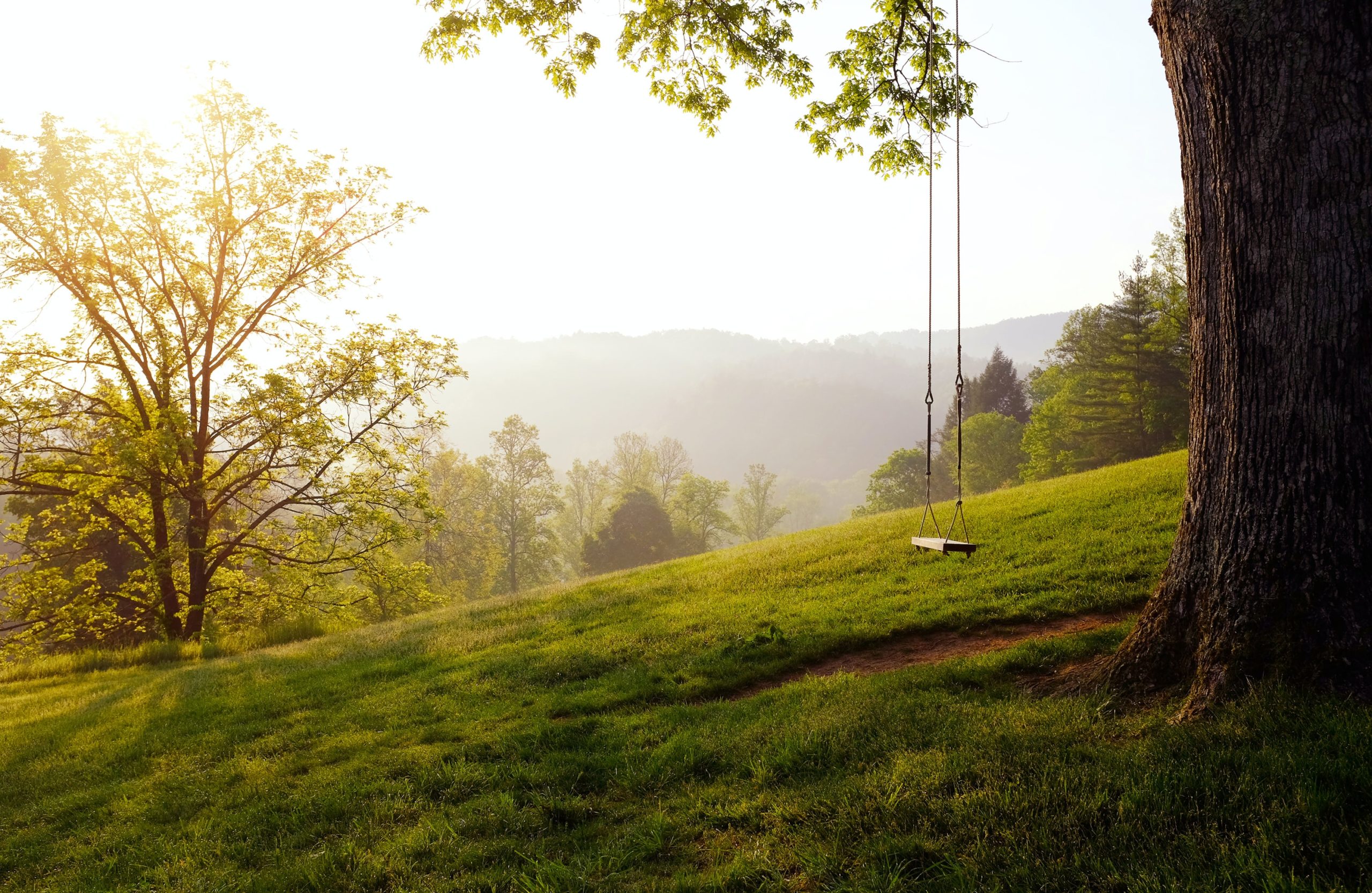
Next Steps:
For my complete conversation with Rona listen to the full podcast episode:
MAKE SURE TO SUBSCRIBE TO THE SCIENCE & SOUL OF LIVING WELL PODCAST.
Apple | Google | Spotify | iHeart | Audible
You can also contact me or join us on Instagram – @drfoynes.
About Rona Fernandez
Rona Fernandez is a writer, dancer, fundraiser, activist, wife and stillmother (a mother with no living children) who lives in the San Francisco Bay Area. Her writing has appeared in many publications, such as The Rumpus, The Colored Lens, Devilfish Review and the Grassroots Fundraising Journal. Her story, “The Ritual,” is included in the groundbreaking anthology, What God is Honored Here: An Anthology on Miscarriage and Infant Loss, the first collection of writings by Native women and women of color on this topic. Rona is an alumna of the Voices of Our Nations Arts Foundation (VONA) workshop for writers of color, the Macondo Writers Workshop and the Tin House Novel Workshop. She is currently at work on a climate fiction novel set in the near future in California.
You can find her on Twitter and Medium or visit her website.
BEFORE YOU GO…
DOWNLOAD THE FREE 49 PAGE WORKBOOK
LEARN MORE ABOUT MY COACHING PRACTICE THROUGH THIS FREE VIDEO SERIES:
The Science & Soul of Building Resilience
In this 4-part series you’ll learn:
- Body awareness to help us center ourselves and live in a present-focused and embodied way even in the midst of stress
- Decreasing our stress response so we can access intuition and connect to our needs
- Values clarification to guide decisions about prioritizing our time, attention and energy
- Self-compassion to soften our harsh inner critics and facilitate growth following mistakes
Freebie Alert!
Freebie Alert!
Newsletter
Sign up to get a dose of love, inspiration, wisdom &
all the latest news on events straight to your inbox.
privacy
terms
made with ❤ by habitat society
Explore
©2022, Melissa foynes
Thank you
You're subscribed to my newsletter. Please whitelist my email to make sure you don't missing anything I send you.
